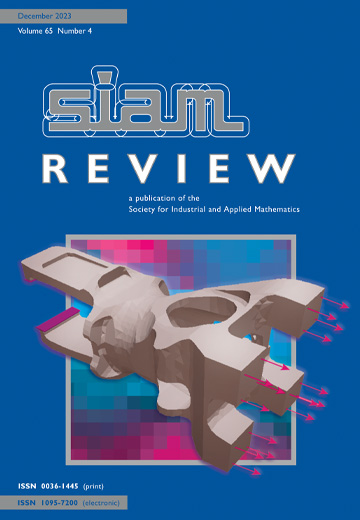生成式人工智能的扩散模型:应用数学导论
IF 6.1
1区 数学
Q1 MATHEMATICS, APPLIED
引用次数: 0
摘要
SIAM评论,第67卷,第3期,607-623页,2025年8月。摘要。生成式人工智能(GAI)是指能够产生合成但真实的输出的算法。扩散模型目前在图像GAI中提供了最先进的性能。它们还构成了更通用的工具的关键组件,包括文本到图像生成器和大型语言模型。扩散模型的工作原理是向可用的训练数据中添加噪声,然后学习如何逆转这一过程。然后可以将相反的操作应用于新的随机数据,以产生新的输出。我们为应用数学家和统计学家简要介绍了扩散模型。我们的主要目标是(a)提供说明性的计算示例,(b)给出所涉及的基本数学公式的仔细推导,以及(c)与偏微分方程(PDE)扩散模型建立联系。我们提供了计算实验的代码。我们希望这个话题会引起本科生和研究生的兴趣。部分材料也可能为那些教授随机过程、推理、机器学习、偏微分方程或科学计算课程的人提供有用的激励例子。本文章由计算机程序翻译,如有差异,请以英文原文为准。
Diffusion Models for Generative Artificial Intelligence: An Introduction for Applied Mathematicians
SIAM Review, Volume 67, Issue 3, Page 607-623, August 2025.
Abstract.Generative artificial intelligence (GAI) refers to algorithms that create synthetic but realistic output. Diffusion models currently offer state-of-the-art performance in GAI for images. They also form a key component in more general tools, including text-to-image generators and large language models. Diffusion models work by adding noise to the available training data and then learning how to reverse the process. The reverse operation may then be applied to new random data in order to produce new outputs. We provide a brief introduction to diffusion models for applied mathematicians and statisticians. Our key aims are to (a) present illustrative computational examples, (b) give a careful derivation of the underlying mathematical formulas involved, and (c) draw a connection with partial differential equation (PDE) diffusion models. We provide code for the computational experiments. We hope that this topic will be of interest to advanced undergraduate and postgraduate students. Portions of the material may also provide useful motivational examples for those who teach courses in stochastic processes, inference, machine learning, PDEs, or scientific computing.
Abstract.Generative artificial intelligence (GAI) refers to algorithms that create synthetic but realistic output. Diffusion models currently offer state-of-the-art performance in GAI for images. They also form a key component in more general tools, including text-to-image generators and large language models. Diffusion models work by adding noise to the available training data and then learning how to reverse the process. The reverse operation may then be applied to new random data in order to produce new outputs. We provide a brief introduction to diffusion models for applied mathematicians and statisticians. Our key aims are to (a) present illustrative computational examples, (b) give a careful derivation of the underlying mathematical formulas involved, and (c) draw a connection with partial differential equation (PDE) diffusion models. We provide code for the computational experiments. We hope that this topic will be of interest to advanced undergraduate and postgraduate students. Portions of the material may also provide useful motivational examples for those who teach courses in stochastic processes, inference, machine learning, PDEs, or scientific computing.
求助全文
通过发布文献求助,成功后即可免费获取论文全文。
去求助
来源期刊

SIAM Review
数学-应用数学
CiteScore
16.90
自引率
0.00%
发文量
50
期刊介绍:
Survey and Review feature papers that provide an integrative and current viewpoint on important topics in applied or computational mathematics and scientific computing. These papers aim to offer a comprehensive perspective on the subject matter.
Research Spotlights publish concise research papers in applied and computational mathematics that are of interest to a wide range of readers in SIAM Review. The papers in this section present innovative ideas that are clearly explained and motivated. They stand out from regular publications in specific SIAM journals due to their accessibility and potential for widespread and long-lasting influence.
 求助内容:
求助内容: 应助结果提醒方式:
应助结果提醒方式:


